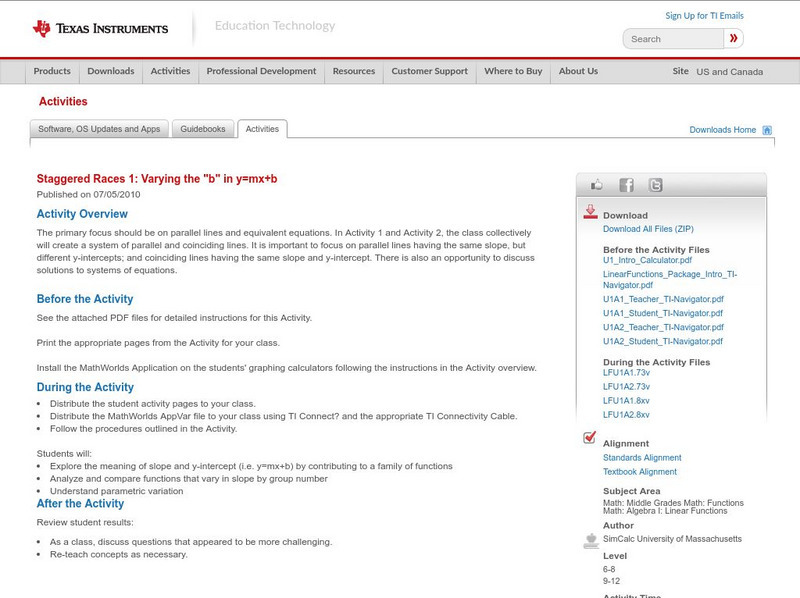PBS
Pbs Mathline: Bead Dazzling (Proportional Reasoning) [Pdf]
A comprehensive lesson plan on algebraic thinking where students create and identify patterns using proportional reasoning. Research based, this lesson plan includes technology connections, items for discussion, and extension activities.
PBS
Pbs Mathline Lesson: Mix It Up [Pdf]
A lesson based on the story, "Oliver's Fruit Salad," where young scholars explore the concept of proportional reasoning through modeling, student sharing, and questioning. A great introductory lesson for this concept that is sure to...
PBS
Pbs Teachers: Earth Day: What We Do Adds Up
Explore averages and rates of change and apply to calculate the cumulative effect of garbage thrown out by people over time. Use population data from the U.S. Bureau of Census to estimate how much garbage your county threw away during...
CK-12 Foundation
Ck 12: Algebra: Equations That Describe Patterns
[Free Registration/Login may be required to access all resource tools.] Recognize and find numerical patterns by finding a rule
Texas Instruments
Texas Instruments: Staggered Races 1: Varying the ?B? In Y=mx+b
The primary focus in this activity is on parallel lines and equivalent equations. In Activity 1 and Activity 2, the class collectively will create a system of parallel and coinciding lines. It is important to focus on parallel lines...
BBC
Bbc: Solving Equations and Inequalities
This is where you can pick up some valuable pointers on how to solve equations and inequalities. When you finish working your way through the pages you can take an on-line "Test Bite," and check your understanding.
University of Cambridge
University of Cambridge: Nrich: Games Frogs
Use this interactive game to improve your knowledge and understanding of patterns and algebra. Can you describe a rule to follow where you make the least moves? Just follow the instructions below it.


![Pbs Mathline: Bead Dazzling (Proportional Reasoning) [Pdf] Lesson Plan Pbs Mathline: Bead Dazzling (Proportional Reasoning) [Pdf] Lesson Plan](https://content.lessonplanet.com/knovation/original/114246-c0ff81bc865fdf767397fcd7c31f2652.jpg?1661409083)
![Pbs Mathline Lesson: Mix It Up [Pdf] Lesson Plan Pbs Mathline Lesson: Mix It Up [Pdf] Lesson Plan](https://content.lessonplanet.com/knovation/original/114249-5c08953e64aa805320eac921a29839e3.jpg?1661409096)




